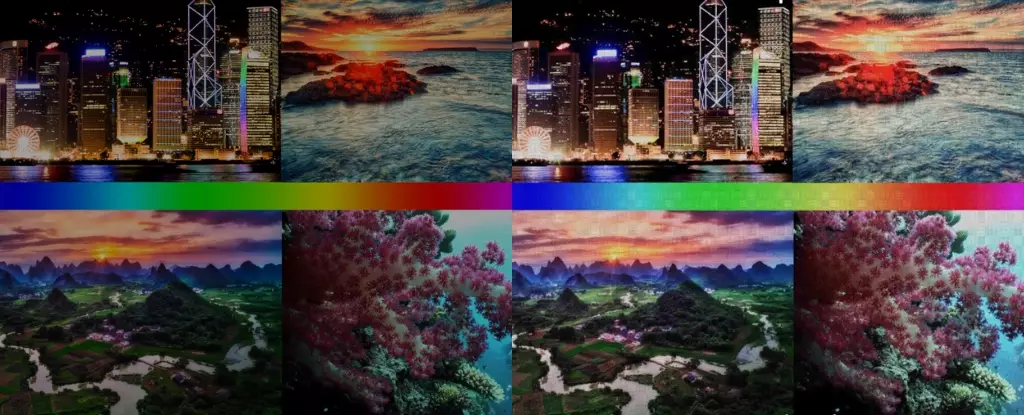In the world of DNA research, scientists have long sought new techniques to unravel the mysteries hidden within our genes. One such technique, using fluorescent markers to visualize unique double-stranded DNA structures, has now taken a giant leap forward. With advancements in technology, researchers can now create stunning works of art in the laboratory with a staggering 16 million shades and hues. But this novel approach is far more than just an artistic endeavor; it has the potential to revolutionize gene expression studies and open doors to a wide range of applications.
Traditionally limited to a palette of just 256 colors, the new technique allows for the accurate recreation of digital images with a 24-bit color depth. By painting DNA sequences onto biopolymers at a micrometer scale, researchers from the University of Vienna have showcased the possibilities of this method. Beyond its artistic appeal, this technology could be used for data storage on DNA, offering a higher storage capacity on a smaller surface. The precise control of DNA self-assembly enabled by this technique also holds promise for biosensors, diagnostics, and other applications where fine-tuned control is crucial.
DNA, with its intricate structure and genetic code, has the potential to store vast amounts of information. Each DNA sequence is composed of four chemical bases: adenine, guanine, cytosine, and thymine. These bases form complementary sequences, allowing scientists to find matching partners in a jumbled mess of DNA. In analytical techniques such as DNA microarrays, complementary DNA strands bind together, and fluorescent markers indicate this binding through their colors. This process, known as hybridization, mimics how living organisms read and copy their genetic information.
From Pixels to DNA
To understand how DNA can be transformed into vibrant works of art, it helps to think about how modern color displays create a wide range of colors. Like the primary channels in a color display (red, green, and blue), DNA sequences can be manipulated to change the intensity of fluorescent markers. By incorporating slight instability into the DNA strands, the researchers were able to alter the brightness of these markers. With the use of specific dyes and patterned DNA surfaces, hundreds of shades of light can be created in each of the RGB channels, resulting in a plethora of colors for painting DNA molecules on a micrometer scale.
The Canvas of DNA
With the help of maskless array synthesis combined with photolithography, the technique allows for the synthesis of hundreds of thousands of unique DNA sequences on a fingernail-sized microarray. By assigning DNA sequences to each pixel’s value, more than 786,000 DNA sequences can be synthesized on the microarray surface, corresponding to an image’s RGB layers. Scanning and merging these layers digitally enables the reproduction of the original image in over 16 million colors, with the potential to achieve even higher resolutions in the future.
Unlocking the Possibilities
The possibilities unleashed by this new era of DNA painting are immense. With higher resolution fluorescence signals, researchers can achieve more precise measurements of processes occurring within our bodies. This could lead to a better understanding of cell biology and the early detection of diseases like cancer. Additionally, the ability to store data on DNA sequences could provide a revolutionary solution for data storage, enabling vast amounts of information to be stored on a smaller surface.
The emergence of fluorescent marker technology in DNA research has opened up a world of possibilities. By merging art and science, researchers can now create stunning works of laboratory art that not only captivate the eye but also facilitate groundbreaking research. With the ability to store data on DNA sequences and achieve higher resolution fluorescence signals, the potential applications of this technique are vast. As we enter this new era of DNA painting, we can only speculate about the exciting discoveries and innovations that lie ahead.


Leave a Reply